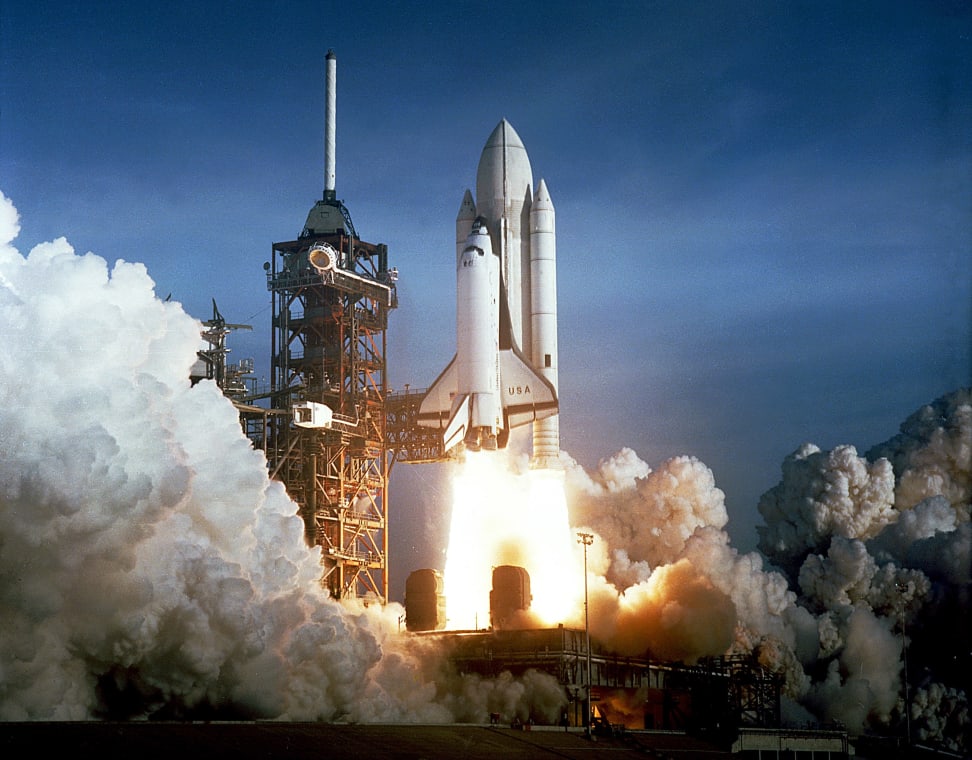8 Everyday Technologies We Owe to NASA Research
NASA played a bigger role in consumer tech than you ever knew.
 Credit:
Credit:
Recommendations are independently chosen by Reviewed's editors. Purchases made through the links below may earn us and our publishing partners a commission.
If there’s one criticism that's been consistently lobbed against NASA, it’s that the returns don’t justify the investment. Despite its impressive resume of accomplishments, many continue to argue that America’s space agency is an economic sinkhole.
If you ever hear someone drop this bomb, do humanity a favor and set them straight. As it turns out, NASA's technological contributions to society are as varied, influential, and lucrative as any private entity, and their residual economic impact has been felt for decades.
It’s been estimated that NASA spinoff technologies have contributed tens of billions of dollars toward economic growth—both directly and indirectly—in the U.S. alone.
So what technological miracles were born of the Apollo, Mercury, and Space Shuttle Programs? You’ve probably heard that Tang, Teflon, and Velcro came out of the space program, but believe it or not, those are all myths. NASA's real success stories are far cooler, and the agency even has a program specifically designed to facilitate spinoff products.
Let’s take a look at some of the more familiar ones.
Satellite Communications

This one’s a bit obvious, but it’s perhaps the most important spinoff technology to emerge from NASA.
While there are plenty of private communications satellites orbiting the Earth today, the basic infrastructure for satellite television, telecommunications, GPS, and even some forms of internet access can be traced back to NASA's early days—specifically the first American communications satellite, Echo 1.
Memory Foam

Source: WikiMedia Commons, "Johan" (CC BY-SA 3.0)
Have you ever slept on a Tempur-Pedic mattress? If you have, you know how comfortable they are. The technology behind these mattresses is something called memory foam, which was developed by NASA’s Ames Research Center in California.
Its high-energy absorption characteristics were originally intended to provide added protection to astronauts and aircraft passengers, but it has since been deployed in everything from NASCAR cars and horseback saddles to pillows and couches.
Scratch-Resistant Lenses

Modern eyeglasses are something of a misnomer, because the lenses are not usually made from glass—at least not since the early 70s.
Before then, NASA had been looking for a type of helmet visor that would minimize scratching and, hence, the accumulation of debris in zero gravity environments like the Skylab Space Station. Through a contract with Foster Grant, a sunglasses manufacturer, NASA licensed the use of coated plastic for use on visors and other space equipment.
Water Filtration Systems

Source: WikiMedia Commons, "Sergio Evsyukov" (CC BY-SA 3.0)
For the Apollo missions, NASA required a lightweight water purification system that would consume minimal energy while taking up as little space as possible. What researchers came up with was stunning: a 9-ounce capsule the size of a deck of cards that releases copper and silver ions into the water to destroy bacteria and algae.
Shortly after the Apollo program ended, a Georgia company acquired the rights to the device and began deploying them at commercial pools, zoo tanks, and public fountains around the country.
Shoe Insoles

Source: Flickr user, "@kevinv033" (CC BY-SA 2.0)
Aerogel is a lightweight, porous material often referred to as "liquid smoke" for its ghostly, translucent appearance. It was invented more than 80 years ago, but it wasn’t until the 1990s that NASA began looking at the material for its potential as cryogenic insulation.
The agency partnered with a Massachusetts firm to develop a flexible, durable, easy-to-use variant. While NASA went on to use the new-and-improved Aerogel for a variety of insulation purposes, it has also been employed in building and construction materials, industrial piping, appliances and refrigeration equipment, automobiles, and, oh yeah... shoe insoles.
The DustBuster

That’s right: Cordless portable vacuum cleaners are the product of NASA brain power—at least the ones made by Black & Decker.
As a contractor for the Apollo program, Black & Decker was tasked with developing a special type of drill for collecting rock samples from moon. It needed to have an independent power source and be strong enough to penetrate the hard lunar surface.
Black & Decker developed a computer program meant to optimize the drill motor’s design, and the resulting product laid the framework for cordless power tools, specifically Black & Decker’s famous DustBuster, which launched in 1979.
Solar Cells

Single crystal silicon solar power cells aren’t the most common type of photovoltaic cell, but they are the most efficient—by up to 50 percent. And the thing about solar technology is it keeps getting cheaper.
These solar cells were the product of a massive NASA-sponsored research initiative called the Environmental Research Aircraft and Sensor Technology (ERAST) Program. A product of the SunPower Corporation, they remain the most advanced silicon-based solar cells available.
Freeze-Dried Foods

Like Aerogel, NASA didn’t invent freeze-dried food, but it did help perfect the technology. In planning for the Apollo missions, which had astronauts living in space for weeks at a time, NASA had to look closely into space food. Freeze-drying was one of the most promising techniques.
The foods are cooked, flash-frozen, and then gradually heated in vacuum to remove ice crystals. This results in food that retains 98 percent of its nutritional content while weighing 80 percent less.
The list of technologies produced, mastered, or funded by NASA is massive, and the number of innovations that these products went on to inspire is incalculable. And while some of the most famous "NASA-born" products have little more than a tenuous link to the agency, the real space program spinoff technology is even better.

